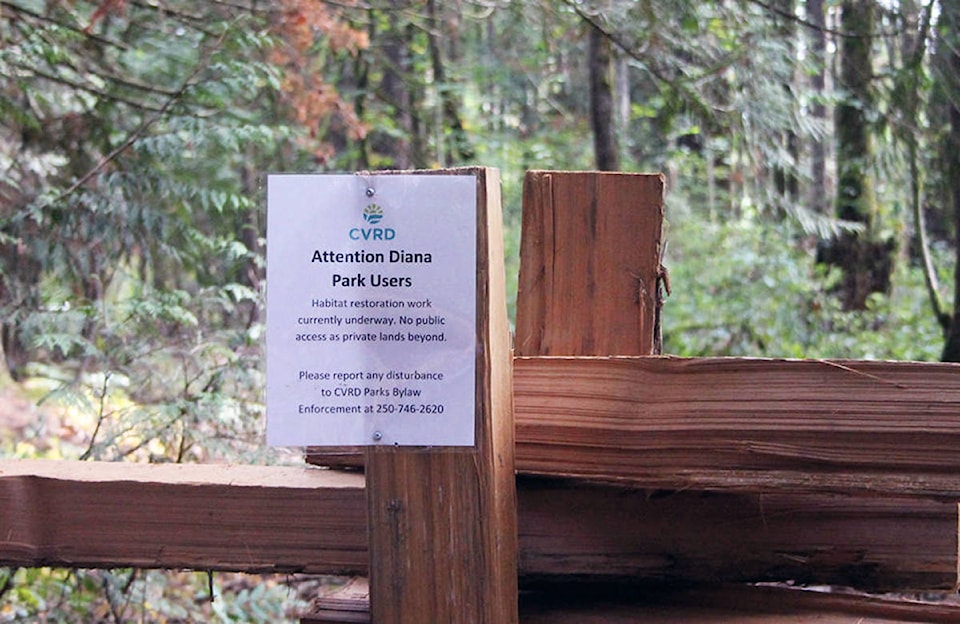Trail users of Diana, Princess of Wales Wilderness Park in Saltair will notice new fencing and signage to block off “ad hoc” trails, and restore natural habitats.
December 2018’s powerful windstorm left the park in disrepair after many trees were blown down. The park sustained $18,000 worth of damage as a result. With trails blocked off, many users created their own trails through the park, some of which went through sensitive wetland areas. Some trails were also closed because they trespass on private property.
“Sometimes people feel that they can go in and create a trail,” CVRD Area G Director Lynne Smith said. “Once they create a trail, others start following, which then changes the park. An area that’s been closed off is an ad hoc trail. It means that people may not be safe in that area. They may be walking it, but it’s not a designated CVRD trail that’s maintained.”
Adding trails contravenes the agreement that formed Diana, Princess of Wales Wilderness Park, which states there must be minimal trails. When the land was donated as a park in 2001 by Patricia Doornbosch and Dianna Waddell Hall, they insisted the land be a “wilderness park that preserves the area’s natural forest.”
Another issue with the ad hoc trails is that their creation disrupts natural water systems in the forest. Normally, water is absorbed through the soft ground into root systems of trees. When a trail is formed, water sheets down the trail and prevents the water from reaching root systems. Cedar trees in the park are dying due to unusually dry seasons in recent years. The shallow root systems of cedar trees create a hazard for dead fall on the trails. The CVRD is mindful of the risks of climate change in their future planning for parks.
“We need to make sure that we retain as much of the ground cover as possible to keep the moisture in for the trees to assist them,” Smith said.
Some of the trails were in use for years, despite being marked as a park boundary previously. Those trails crossed into private property, which meant that trail users were trespassing. Diana, Princess of Wales Wilderness Park is popular among dog walkers in Saltair. The park is one of the most accessible for people with disabilities, as the ground is soft — which makes it easier to walk on — and for some, Diana is the only park where they can walk without aggravating injuries or disabilities. The closure of ad hoc trails has caught many Saltarians by surprise.
“It’s terrible that we have to put up labels and signage just to say to people, ‘please respect this private property’, but it needs to be there to help revegetate that area. It isn’t what I’d like to have seen, but I feel that it’s a good way of working with the people that use the trails and making it possible for us to have the ability still to utilize the park,” Smith said.
The CVRD is conducting a parks survey for Area G asking residents what aspects of parks they utilize, and what they’d like to see in their communities. Representatives are going door-to-door asking for feedback on the survey. Another survey, which focuses specifically on Saltair’s Centennial Park, is being conducted online by the CVRD.
Residents are encouraged to share their views through these surveys, or by reaching out to Smith directly through email. Surveys can be picked up at the Saltair market, formerly known as Byron’s, or accessed on the CVRD website.
